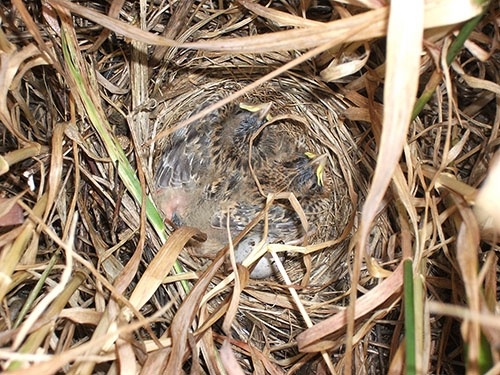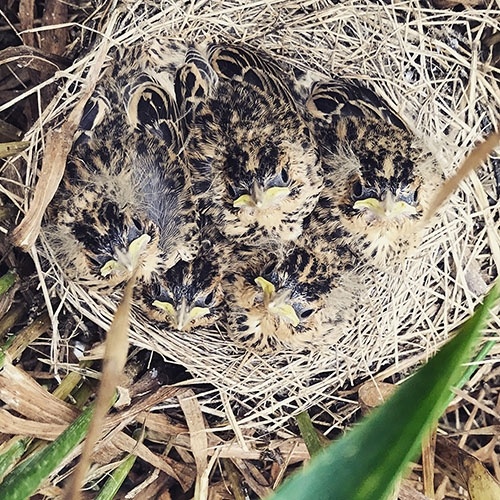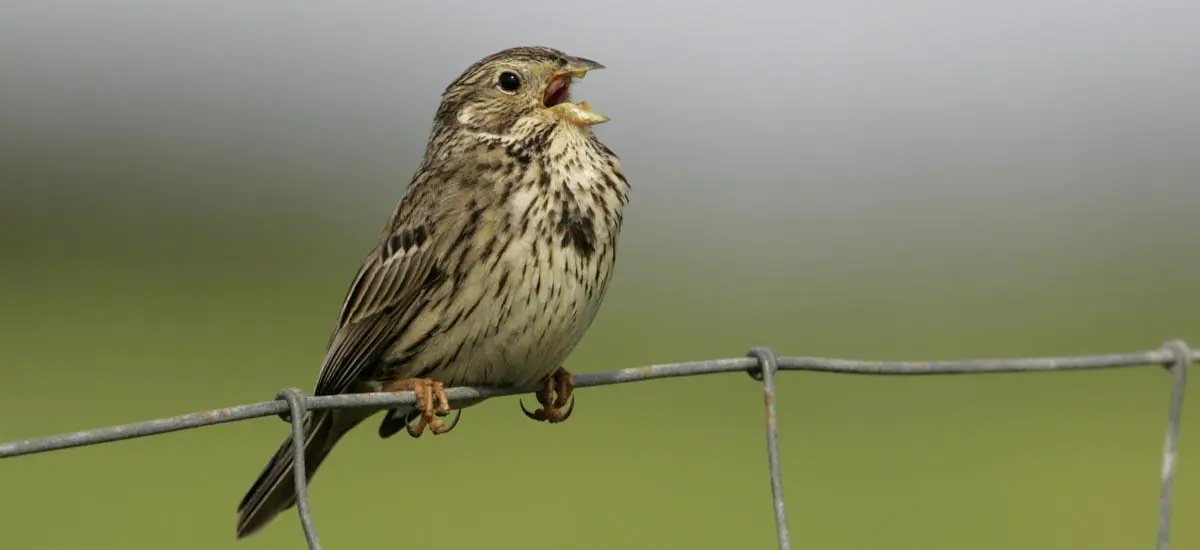Our Brush With The Corn Bunting
Have you heard of the Corn Bunting?
Corn Buntings are notoriously plump, brown & white flecked birds with a quintessentially British name! The name derives from its preference for nesting and feeding in lowland farmland. Seeds, cereal grains, and freshly sown crops are the Corn Buntings foods of choice and this countryside favourite has played friend to many a hardworking farmer.
The word ‘bunting’ reminds us of summer days, fetes, celebrations and fun British summer times where crops, homegrown fruit, and vegetables are in abundance. However, abundance is not a word that can be used for the Corn Bunting and typically recorded numbers have fallen as much as 89% in the last 30 years!

A home in the Country
Our farm has played house to many a Corn Buntings family over the last 70 years and our father can remember a time where their birdsong was ever present through the crops in the warm summer months or spied foraging in grain stores through cold, chilly winter days.
Dense, thick farmland crops give their nests the protection they need, typically laying their eggs within cereal crops in flat or undulating landscapes where they sit in the cozy, comfort of corn, wheat, barley, and oats.
Corn Buntings will rarely grace you with their presence in the garden; although take a walk in the country and you may well be treated to a view of this pretty, dainty bird.
“A bird does not sing because it has an answer, it sings because it has a song”
Research & Rejuvenate
We are pretty obsessed with birds at Ivel Valley Farm and when we were approached by the RSPB to take part in a study of the Corn Bunting and how they nest, we simply jumped at the chance.
As a working farm, we are actively involved in ensuring birds, wildlife and crops are nurtured and preserved and we have a unique process which makes our farm the ideal place to monitor and observe.
Drilling is the process of sowing seeds, for many farms due to the constraints of how close machinery can meet field borders, historically higher seed rates have been used on headlands but the research has indicated that this isn’t the best location for corn bunting to nest.
Double drilling often gifts the borders of the field with an abundance of thick, dense crops.
At Ivel Valley Farm, we actively use the double drilling seed sowing process, in some cases triple drilling to ensure we have maximised the seeds ability to survive and thrive.

Right home, wrong location!
We know from experience Corn Bunting females are naturally drawn to the thick, dense crops.
Imagine the female Corn Buntings delight when faced with plump heavily seeded borders full of twice or three times drilled crops? Thick, bushy and the promise of natures warmth draw them to nest.
Unfortunately, the right home can be in the wrong location and nesting on the edge of a field leaves the Buntings chicks vulnerable to predators.
Even though the crops are dense and nests well protected the chance for opportunists to strike is higher and many chicks suffer an ill fate by literally living on the edge.
However, with our help in monitoring the nests whilst using the double drilling process the RSPB have been able to monitor how successful the nests are and how double/triple drilling can make a difference in their survival or not!
Hang out the Bunting
We were delighted and surprised to hear how a few farming ‘tweaks’ could help re introduce Corn Buntings to the English countryside.
Modern technology allows us to analyse fields on the move and create smaller areas within the safety of the crops, the higher seed rates within a controlled area will encourage nesting areas for Corn Bunting.
Hopefully, females will choose these denser areas for nesting and many more chicks will be born each summer.
We feel we are now more aware than ever how we can help the ‘farmers’ bird thrive once again amongst our crops and this unique experience has given us true insight into how we can help.
Further research is ongoing and we plan to stay part of this critical insight; we cannot wait to spy more Corn Buntings on our farm.
Watch this space!

